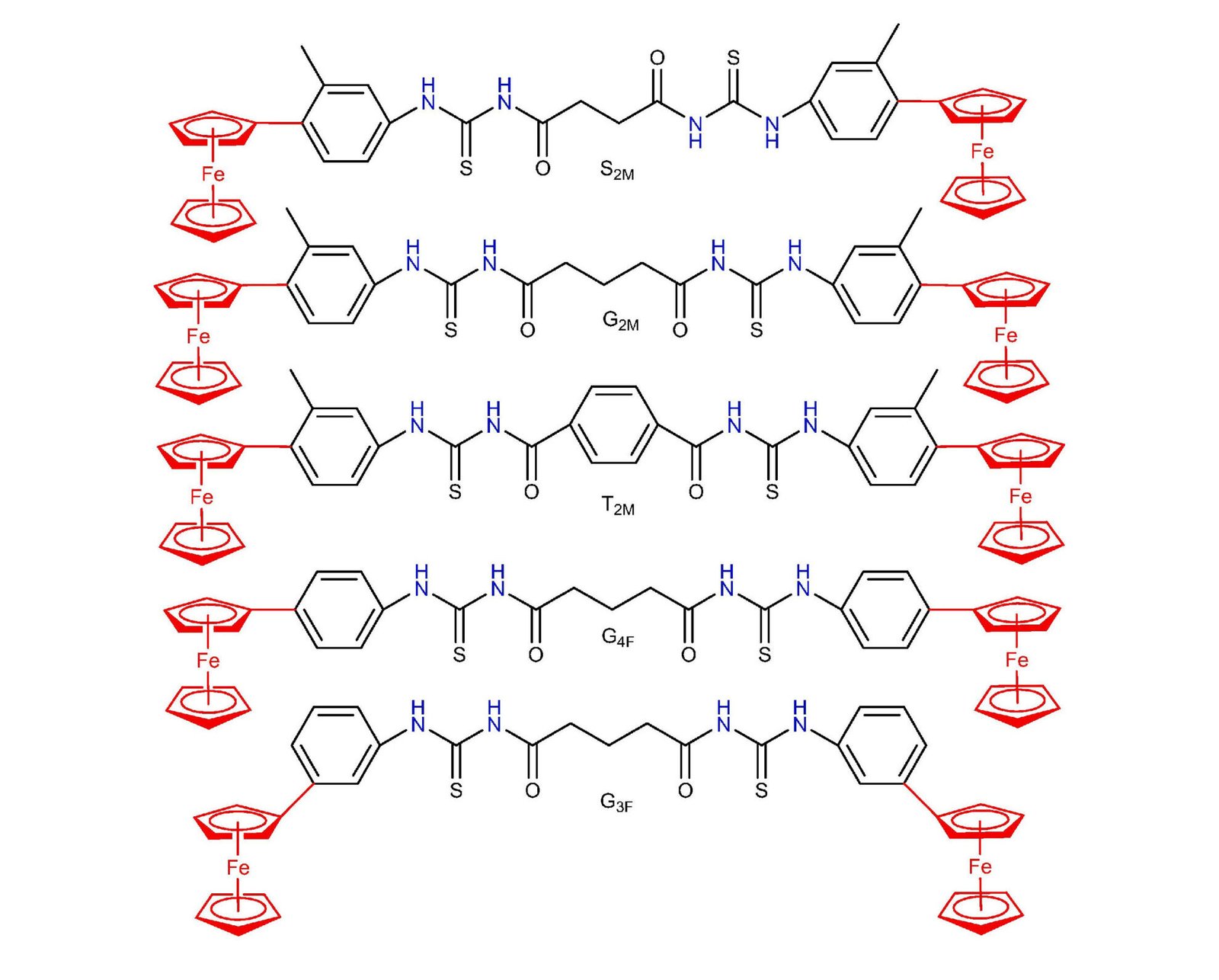Synthesis
1. Assessing the biological potential of new symmetrical ferrocene based bisthiourea analogues
In this project, five new bisferrocenyl bisthiourea derivatives (G₂M, S₂M, G₃F, G₄F, and T₂M) were synthesized and comprehensively characterized. Optical and electrochemical properties were studied through UV–Visible spectroscopy and electrochemical methods, providing key insights into absorption maxima, molar absorptivity, band gaps, and redox behavior. Biological activities were evaluated in vitro, including antibacterial, antifungal, antioxidant, and antidiabetic assays, to establish comparative pharmacological potential among the compounds.
To complement experimental findings, theoretical studies were performed using density functional theory (DFT/B3LYP 6-31G d,p), alongside molecular docking simulations against α-amylase and α-glucosidase, revealing structure–activity relationships at the molecular level. The biological evaluation highlighted S₂M as the most effective antibacterial candidate, G₃F as the strongest antifungal and antidiabetic agent, and T₂M as the best antioxidant. Together, this study demonstrates how synthetic organometallic frameworks can be systematically explored for multifunctional biomedical applications.

2. Synthesis and characterization of Schiff bases and its zinc complexes
In this work, the Schiff base N’-(4-diethylamino-2-hydroxybenzylidene) isonicotinohydrazide is synthesized by a condensation reaction between isonicotinic acid hydrazide (isonicotinohydrazide) and 4-diethylamino salicylaldehyde in dry methanol. The obtained product was further reacted with Zinc salts, and Schiff base complexes of zinc nitrate and zinc chloride were synthesized. The reactions were monitored by thin-layer chromatography, which was taken several times during the reaction. Different techniques, including FT-IR and NMR, further characterized the synthesized Schiff base complexes, and different tests, such as solubility in different solvents and boiling points, were taken.
3. Metal acetyl acetonate complexes: Preparation and characterization
The research focused on synthesizing coordination complexes of metal acetylacetonates derived from the acetylacetonate anion (acac–) and metal ions. The synthesis procedure involved the treatment of a metal salt of (Al, Cr, Mn, Fe, Co, Cu) with acetylacetone. As a result, aluminum acetylacetonate | Al(C2H7O2)3, chromium acetylacetonate | Cr(C5H7O2)3, magnesium acetylacetonate Mg(C5H7O2)3, iron acetylacetonato| Fe(C5H7O2)3, cobalt acetylacetonato | [Co(C5H7O2)3, and copper acetylacetonato | Cu(C2H7O2)2 were obtained. Products were recrystallized, and their melting point was determined. Moreover, the final products were characterized by UV-Visible, FT-IR, and NMR spectroscopy.
Publications
- Jahangeer Patujo, Maria Azeem, Mehmand khan, Haji Muhammad, Ahmad Raheel, Saira Fatima, Bushra Mirza, Zakir Hussain, Amin Badshah, “Assessing the biological potential of new symmetrical ferrocene based bisthiourea analogues”, Bioorganic Chemistry 106 (2021) 104180